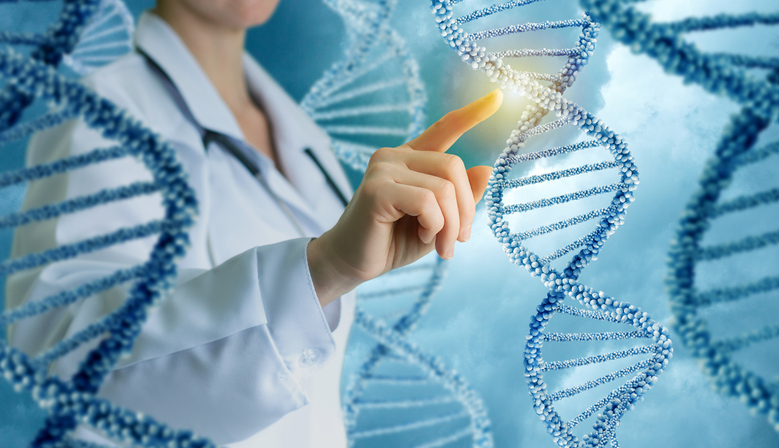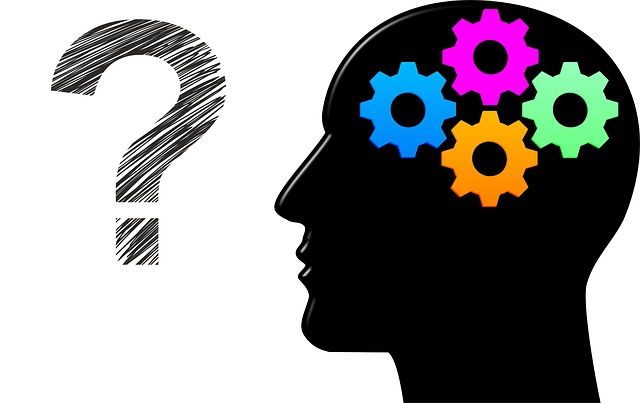- solen.cz - pdf on therapeutic possibilities of Huntington disease
- internimedicina.cz - diagnostics of neurodegenerative diseases in pdf
- psychiatriapreprax.sk -Huntington's disease and cognitive impairment
- sazch.sk information about Huntington disease
Huntington disease: What is it and what are its symptoms and diagnosis?

Huntington's disease is an inherited disease of genetic origin. The chance of transmission is up to 50%, even if only one parent suffers from the disease. Neurodegenerative disease gradually damages the nervous system and nervous tissue in the brain. Especially those parts that are responsible for motion control. It is most common in Europe, North America, much less in Africa and Asia.
Most common symptoms
- Apathy
- Dementia
- Depression - depressed mood
- Hallucinations and delusions
- Malnutrition
- Concentration disorders
- Memory disorders
- Swallowing disorders
- Speech disorders
- Muscle stiffness
- Anxiety
Characteristics
There is no difference between the male and female sex in the case of Huntington. It is relatively rare and affects approximately 7 people in 100,000. Geographically, the incidence rate varies, most often in Europe and the USA. Less often in Asia and Africa.
A disease with a progressive property means that it begins to manifest gradually and over time the symptoms of the disease worsen. The onset of symptoms most often occurs in middle age. And the most frequent in the range from 20 to 40 years of age. However, it can also break out in childhood or old age. The disease, which occurs before the age of 20, is also referred to as juvenile Huntington's disease.

In younger children, it is quite common for the bad gene to be transmitted by the father. The essence of the disease lies in the transmission of genetic information, which is stored in the so-called triplets, i.e. a trio of nucleotides. These are responsible for the production of proteins in the human body. Specifically, it is a CAG triplet.
Thus, a mutation in the gene that results in the production of a substance called Huntingtin is responsible. It was discovered in 1993, however, its exact function is unknown. The prerequisite is to play a role in the development of the CNS, ie the central nervous system.
It was first described in 1872 by the American physician George Huntington.
In Huntington's disease, these triplets are repeated frequently. It is the number and frequency of triplet repetitions that affects the time of symptom onset. A higher amount results in an earlier onset.
Neurodegenerative damage means that it results in disruption of the neurological system. And even the central nervous system, ie the brain. It typically involves uncoordinated involuntary movements. But it also interferes with mental abilities. The disease also affects cognitive, or cognitive, functions, especially memory or speech.
As already indicated, Huntington's disease takes various forms. More precisely, three. These are divided according to the age at which the disease begins to manifest. A more detailed description is given in the table.
Table with distribution of forms of disease and description
| Name | Age in which the symptoms might appear | Description |
| Juvenile Form | before 20th |
|
| Classic Form | between 20th and 50th |
|
| A form with a late beginning | over 60th |
|
Causes
Also interesting are the fact that if the mother was the cause of the faulty gene, the disease is milder and older. In the case of the father, it is the opposite. As many as 95 percent of diseases are caused by heredity. So gender transmission is also the most serious risk factor. It is reported that in about 5% of cases, this is a mutation in humans without the effect of heredity.
A genetic mutation is caused by a change in the order of bases in a gene. There are four bases and they are divided into Adenine, Thymine, Guanine and Cytosine. They form a code in a gene by their arrangement. In the case of Huntington, C-A-G is redundantly repeated in the DNA code.
Under normal circumstances, triplet C-A-G is repeated approximately 9 - 35 times. However, there are more than 40 of them in this disease, it has been confirmed that the more there are, the faster the disease manifests. The result is therefore the formation of the Huntingtin protein. It then causes the disease by damaging the brain and disrupting its function.
Symptoms
Manifestations of the disease include the most common external and visible symptoms. Within movement disorders, chorea is the most common symptom. The affected person has uncontrollable, ie involuntary movements. For example, the hands, but also the facial mimic muscles, or uncontrolled movement of the tongue.
Symptoms of the disease include impaired swallowing, salivation, and decreased food intake. One cannot take care of oneself and needs daily help, one is not self-sufficient. As a result, the disease is often accompanied by weight loss, ie malnutrition.
Brain damage also affects a person's mental abilities. This is about cognitive functions, as well as speech or memory. An example is the change in behavior when a peaceful individual suddenly becomes an aggressive and egocentric person.
Very common symptoms are therefore aggression or even apathy or depression, and at a later stage also dementia. In the most serious cases, the disease leads to a complete change of personality. Personality breakdown and psychotic disorders.
The division of clinical symptoms into 5 stages is given:
- the stage when a person is fully active and self-sufficient is able to do the work
- stage, a slight restriction of activities, but one is self-sufficient
- the stage when incapacity for work is present requires assistance with the activities
- stage, a person is not self-sufficient, however, can still live at home
- stage of non-self-sufficiency, requiring full nursing care

First of all, psychological changes occur, which include:
- change and personality disorders,
- reduction of intellect, memory disorders, learning,
- concentration disorders,
- loss of interest in favorite activities,
- slowed psyche,
- reduction of judgment and criticality,
- incorrect assessment of the situation,
- anxiety, behavioral disorder,
- aggression, mood swings,
- emotion depressive disorder, tendency to suicide,
- delusions, psychotic disorders, hallucinations, paranoia,
- dementia to complete personality breakdown.
Due to the later onset of motor, ie movement difficulties, the correct diagnosis of the disease is often delayed. It happens that a psychiatric disorder is misidentified. While Huntington remains undetected. Subsequently, following the association of movement disorders, the suspicion turns to this disease.
The disease has the following motor manifestations:
- muscle twitches, such as tics in the face,
- grimacing,
- mimic muscle cramps,
- motor restlessness,
- speech disorders, impaired pronunciation, ie dysarthria,
- involuntary sounds,
- impaired swallowing,
- running a diet and the risk of inhaling a foreign body, ie aspiration,
- increased salivation,
- the onset of involuntary movements, also called chorea
- sudden movement of the limb
- jerky movements
- twisting movements
- uncoordinated movements
Motor skills are not curable, however, their deterioration usually occurs during targeted movement. In peace, especially during sleep, involuntary movements cease. The gait is also generally worsened and may resemble a state of intoxication. The late stages are characterized by a loss of self-sufficiency.
Diagnostics

Based on the exact number, it is possible to determine the degree of mutation and degeneration of genetic information. The possible onset and intensity of the disease can also be estimated. Psychological or psychiatric examination is also used to determine the disease.
Neurological examination is also used in the diagnosis, motor skills are evaluated. Overall physical and physical status, as well as involuntary movements and other difficulties present. As a rule, other basic laboratory tests are also performed. EEG, which is an examination of the electrical activity of the brain, is also used in differential diagnosis.
CT or magnetic resonance imaging is also helpful. Especially with a focus on the basal ganglia, the cerebral cortex, of course, and the overall condition of the brain. The disease is often diagnosed only at the stage when motor manifestations begin. Because, in the event of mental health problems, Huntington's disease is not considered in the initial examinations.
Course
This form is the most common and occurs in 90% of HD cases. First of all, there are mental problems. These include lighter forms such as anxiety, mood swings and greater emotion. One loses interest in hitherto popular activities.
His intellect decreases, he has a problem with memory, concentration, and therefore with learning. Behavior is affected by reduced judgment, criticality and misjudgment of the situation. Criminal behavior may also occur. Overall, he is mentally slowed down, ie bradypsychic. On the other hand, behavioral changes can stimulate aggression.
A worse option is depressive states and the resulting suicidal tendencies. Over time, psychotic difficulties such as delusions or hallucinations arise. The culmination of psychological changes is personality breakdown and dementia.
It happens that the diagnosis is not led by mental difficulties, but only by the occurrence of motor disorders. Initially, minor muscle twitches, such as facial facial muscles, appear. Muscle tics or grimaces. Sudden movements of the legs and other involuntary jerky as well as torsional movements are referred to as chorea.
The involuntary movements resembling dance, from which the Greek name chorea was derived.
There is general motor unrest. The movements are rough, useless. They are aggravated by their intended movement, and in times of peace and sleep they retreat. Speech disorders as well as non-voluntary sounds are associated. The quality of life is significantly affected.

There are issues with fluid and dietary intake. Swallowing is also problematic, it also causes excessive salivation. There is frequent running-in of food or fluids. This is the risk of inhaling a foreign object, such as food. Aspiration causes pneumonia, which is risky for complications.
Over time, self-sufficiency is reduced. Fine motor skills are affected. One cannot get dressed, turn on the buttons. Objects fall out of his hands, he has a problem with writing. Walking may resemble a state of intoxication. At a later stage, there is a loss of mobility or rigidity, ie muscle stiffness.
Loss of self-sufficiency causes eating disorders and weight loss. In the case of stage 4, a person is not self-sufficient, but still capable of domestic life. However, this does not apply to the 5th stage, in which all-day nursing care is required.
Mental difficulties and motor impairment progress. Suicidal tendencies occur in depression. The length of survival is usually in the range of 10 - 15 years from the discovery of difficulties.
With a larger mutation range, the onset of difficulty is earlier. If they occur before the age of 20, the form of the disease is classified as juvenile Huntington's disease. In the foreground are mainly mental difficulties. Epilepsy and Parkinson's syndrome are associated.
Involuntary movements are rarer or mild. The disease is more vigorous and progresses faster. This form of juvenile Huntington's disease has a shorter survival time.
Conversely, if the gene mutation is to a lesser extent, the disease begins later. It is called a late-beginning form. It is usually after the age of 60.
The overall process is slower. Manifestations are similar to the classical form. However, they are milder in nature. Survival time is normal and comparable to a healthy population.
How it is treated:
Manifestation of the Huntigton disease
is treated by
Other names
Interesting resources










